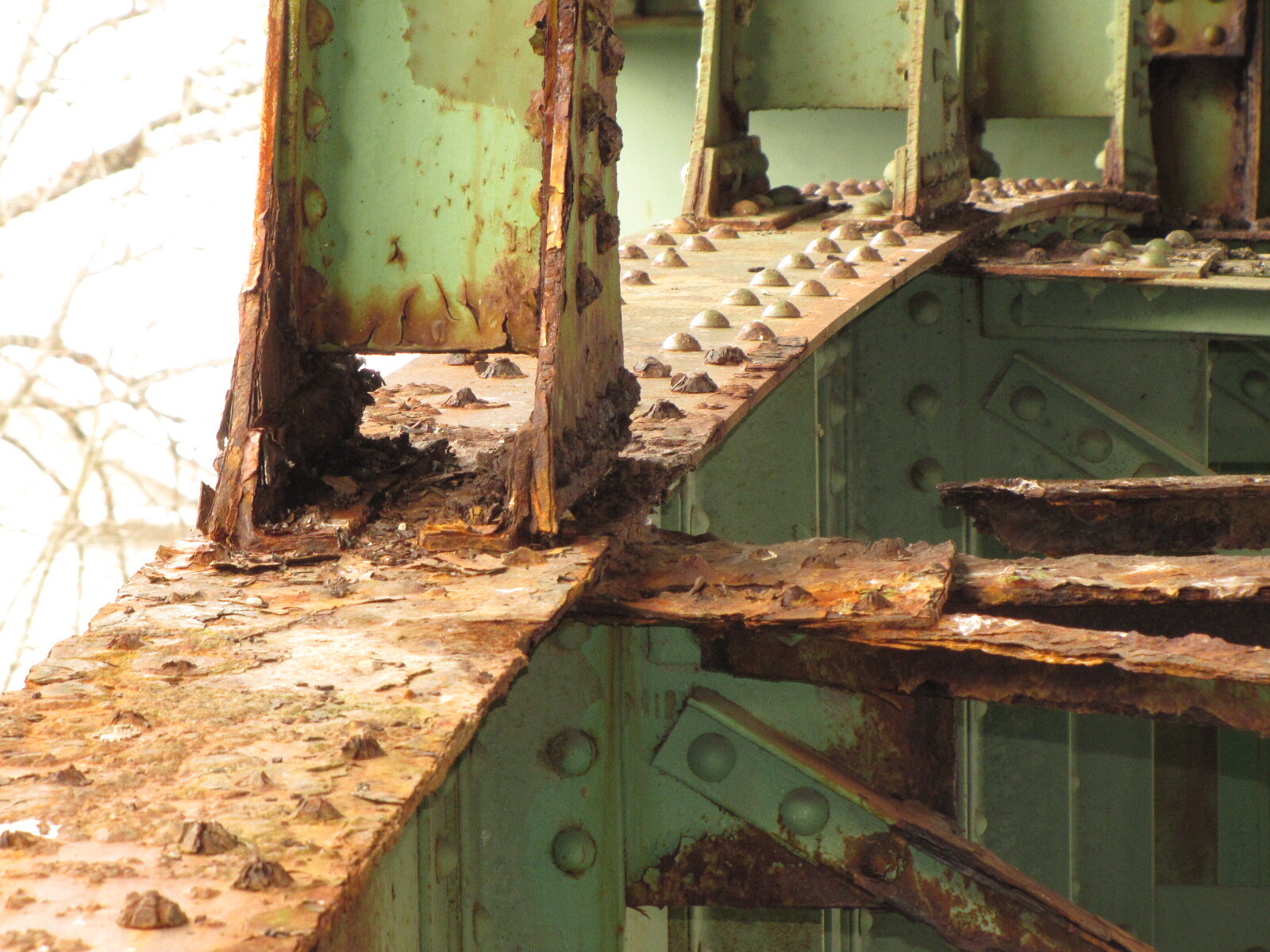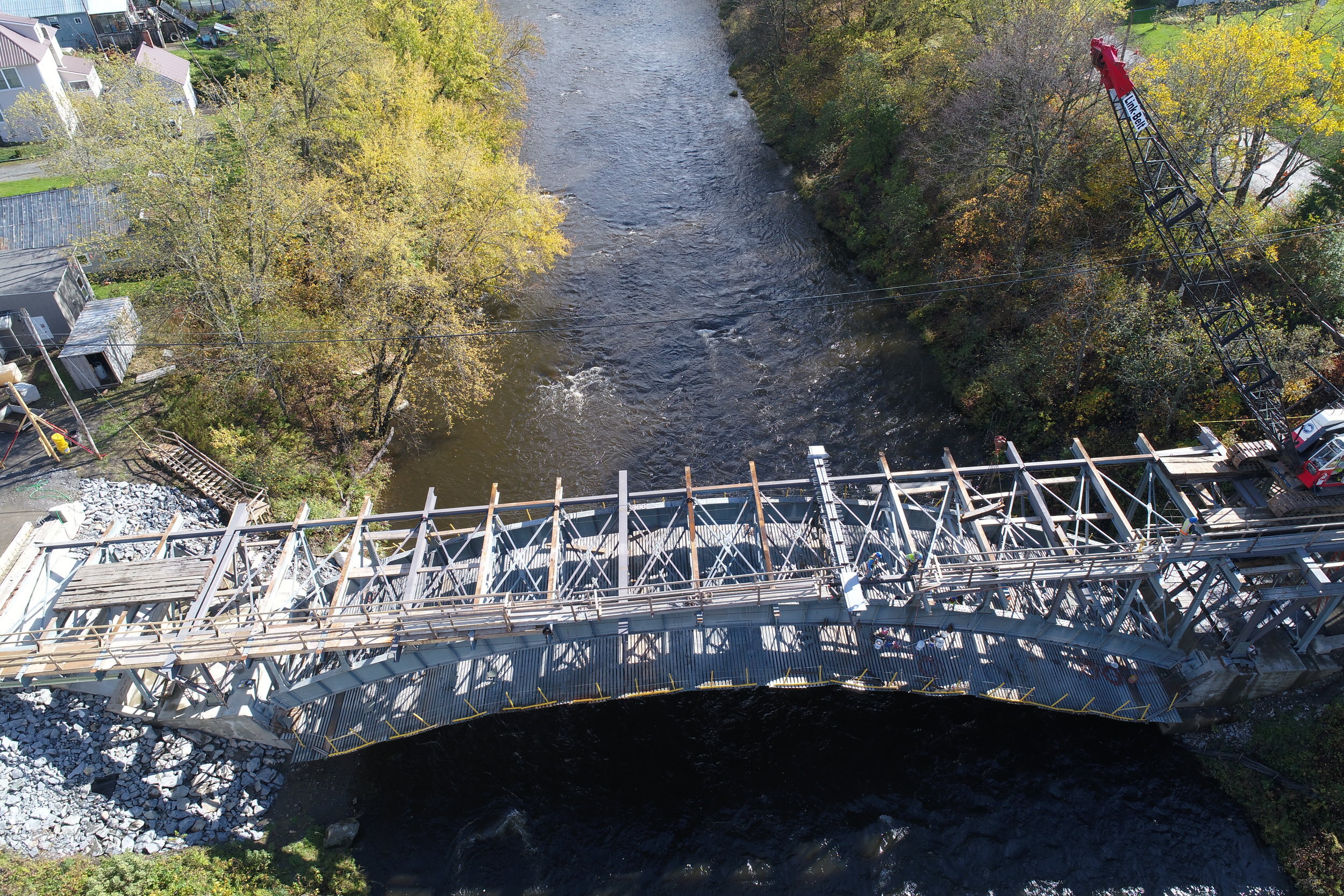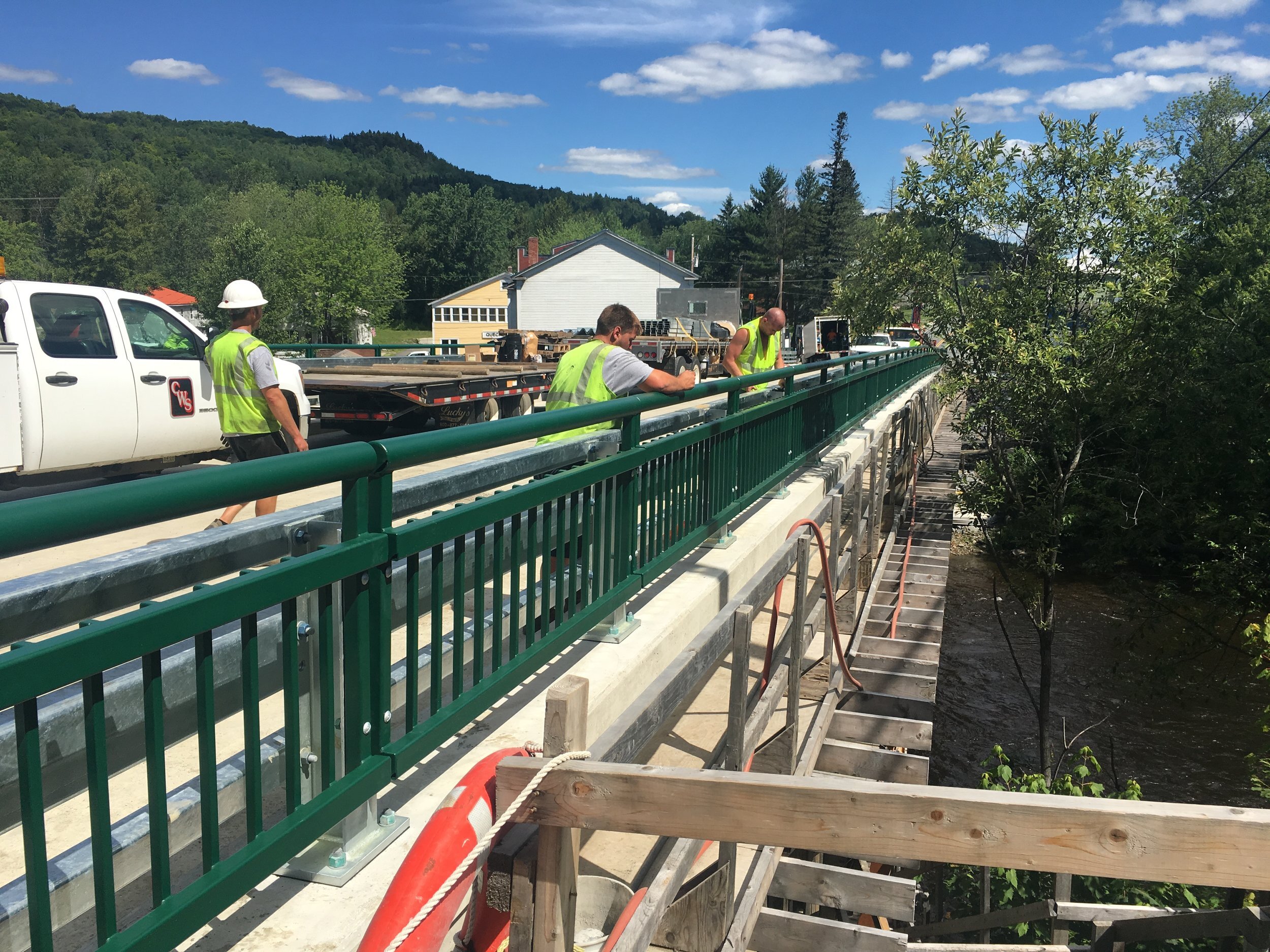2019 Preservation Achievement Award: N.H. Department of Transportation
For the restoration, rehabilitation and stewardship of the Stewartstown Bridge
With partners: N.H. DOT Bridge Design; CPM Constructors Inc.; KTA-Tator, Inc.; Calderwood Engineering; ARC Enterprises; Auciello Iron Work; and Modern Protective Coating
The Stewartstown Bridge, which connects its namesake town to Beecher Falls, Vermont over the Connecticut River, was one of the few remaining metal truss buildings in the state when it was placed on the Preservation Alliance’s Seven to Save list in 2008. In 2017, the State of New Hampshire Department of Transportation launched an extensive rehabilitation process that has restored the 1931 bridge to its former glory. (Photo courtesy of NH DOT.)
Today in New Hampshire, there are fewer metal truss bridges than covered bridges. The alarming rate of their disappearance led to their categorical listing on the New Hampshire Preservation Alliance’s Seven to Save list in 2008.
But just a half-mile from the Canadian border, a historic two-hinged, spandrel-braced steel arch bridge connecting Stewartstown to Beecher Falls, Vermont, is now restored thanks to the efforts of the N.H. Department of Transportation.
The Stewartstown Bridge was built in 1931, ironically, to replace an 1882 covered bridge. This modernization won an award of merit from the American Institute of Steel Construction as the most beautiful Class C steel bridge in America. Metal bridges are difficult to maintain in New Hampshire due to winter salt exacerbating rusting, however, and by the 2000s, the bridge was red-listed.
Nevertheless, restoration was chosen over replacement, and work started in 2017. Tasks included the complete removal of the concrete deck and asphalt overlay and replacement with a light weight concrete bare deck, select replacement of spandrel bent steel components and installation of additional cover plates on the arches. The work also included removal of obsolete, asbestos-insulated water line from the bridge and replacement of the top portion of the Vermont spill-through abutment, along with repairs to the arch thrust block on the Vermont side.
Additionally, the number of intermediate deck joints was reduced from six to four, and sleeper slabs were incorporated to provide compression seal joints at either end of the bridge that moved the expansion joints to the back sides of abutment back walls. Significant drainage work was incorporated on both bridge approaches, which reduced the amount of water runoff traveling across the bridge from the very steep New Hampshire approach and reduced the surface water runoff traveling into the intersection just to the north of the Vermont abutment.
A cosmetic baluster rail system was also incorporated and attached to the tubular vehicular rail to mimic the historic look of the original bridge rail. All metal surfaces were powder coated with the original bridge’s green color to preserve the historic nature of the structure. With this work complete, the 10-ton posting was removed and all legal loads can now be carried on the bridge.
For the non-engineers: the bridge was thoroughly rehabilitated and upgraded. So next time you’re in Stewartstown, be sure to cross the Connecticut over this historic metal bridge and thank the people who restored this special structure.





